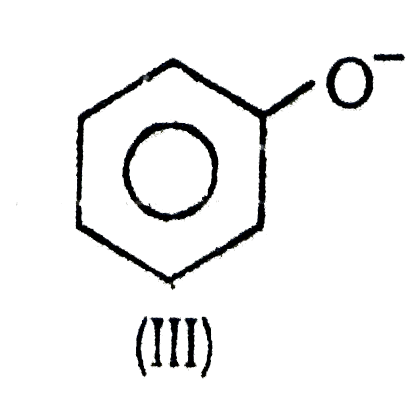Consider the reaction: C2H5O−+ Dimethyl sulphate ⎛⎜
⎜⎝Me−O−O∣∣S∣∣O−O−Me⎞⎟
⎟⎠→
The leaving group is:
MeOSO2O−
MeO−
Me(−)
MeOSO−2
The correct Answer is:B
To determine the leaving group in the reaction between ethoxide ion (C₂H₅O⁻) and dimethyl sulfate (Me₂SO₄), we can follow these steps:
1. Identify the Reactants:
The reactants in the reaction are the ethoxide ion (C₂H₅O⁻) and dimethyl sulfate (Me₂SO₄).
2. Understand the Structure of Dimethyl Sulfate:
Dimethyl sulfate can be represented as:
Me-O-S(=O)(=O)-O-Me
Here, the sulfur atom is bonded to two methyl groups and has a sulfonate structure.
3. Recognize the Nucleophile:
The ethoxide ion (C₂H₅O⁻) acts as a nucleophile. It has a negative charge and is capable of attacking electrophilic centers.
4. Mechanism of Reaction:
When the ethoxide ion attacks one of the methyl groups in dimethyl sulfate, the electrons from the C-O bond will move towards the oxygen, creating a negative charge on the oxygen and causing the methyl group to become a good leaving group.
5. Identify the Leaving Group:
The leaving group in this reaction is the group that departs when the nucleophile attacks. In this case, the leaving group is:
MeOSO−2
This group is formed when the ethoxide ion attacks the methyl group, resulting in the formation of ethyl methyl ether and the departure of the methyl sulfonate ion.
6. Conclusion:
The leaving group in the reaction is:
MeOSO−2
which corresponds to option A.
Final Answer:
The leaving group is: MeOSO₂⁻ (option A).
---
The reactants in the reaction are the ethoxide ion (C₂H₅O⁻) and dimethyl sulfate (Me₂SO₄).
Dimethyl sulfate can be represented as:
Me-O-S(=O)(=O)-O-Me
Here, the sulfur atom is bonded to two methyl groups and has a sulfonate structure.
The ethoxide ion (C₂H₅O⁻) acts as a nucleophile. It has a negative charge and is capable of attacking electrophilic centers.
When the ethoxide ion attacks one of the methyl groups in dimethyl sulfate, the electrons from the C-O bond will move towards the oxygen, creating a negative charge on the oxygen and causing the methyl group to become a good leaving group.
The leaving group in this reaction is the group that departs when the nucleophile attacks. In this case, the leaving group is:
MeOSO−2
This group is formed when the ethoxide ion attacks the methyl group, resulting in the formation of ethyl methyl ether and the departure of the methyl sulfonate ion.
The leaving group in the reaction is:
MeOSO−2
which corresponds to option A.
The leaving group is: MeOSO₂⁻ (option A).
Topper's Solved these Questions
- ALCOHOL,PHENOL AND ETHERSBOOK - CENGAGE CHEMISTRY ENGLISHCHAPTER - ALCOHOL,PHENOL AND ETHERSEXERCISE - Exercises Assertion-Reasoning
5 Videos
- ALCOHOL,PHENOL AND ETHERSBOOK - CENGAGE CHEMISTRY ENGLISHCHAPTER - ALCOHOL,PHENOL AND ETHERSEXERCISE - Archives Single Correct
14 Videos
- ALCOHOL,PHENOL AND ETHERSBOOK - CENGAGE CHEMISTRY ENGLISHCHAPTER - ALCOHOL,PHENOL AND ETHERSEXERCISE - Exercises Multiple Correct
24 Videos
- ALIPHATIC AND AROMATIC ALDEHYDES AND KETONESBOOK - CENGAGE CHEMISTRY ENGLISHCHAPTER - ALIPHATIC AND AROMATIC ALDEHYDES AND KETONESEXERCISE - Archives Subjective
26 Videos
Similar Questions
Consider the following anions.
(I) CF3−O∣∣S∣∣O−O− (II) C6H5−O∣∣S∣∣O−O− (III) (IV) CH3−O∣∣C−O−
(IV) CH3−O∣∣C−O−
When attached to sp3-hybridized carbon, their leaving group ability in nucleophilic substitution reactions decreases in the order
View SolutionIn the given reaction C6H5−O∣∣C−CH3(i)C2H8MgBr−−−−−−−−→(ii)H2O/H+(X) X will be
View Solution
Knowledge Check
The IUPAC name of CH2=Me∣C−O∣∣C−OC2H5 is
AEthyl 2-methylprop-2-enoateBEthyl 2-methylprop-1-enoateC1-Ethoxy-2-methylprop-2-enoneD1-Ethoxy-2-methylprop-2-enalIn the reaction :
Me3C−O−CH2CH3+HI1 moleΔ−−→AMe3C−OH+CH3CH2IBMe3C−I+CH3CH2OHCMe3C−I+CH3CH2IDMe3C−OH+CH3CH2OH
Consider the following reaction.
CH3O16∣∣C−O18−C2H5+H2O16H+−−→Heat
The products formed in the reaction are
View SolutionThe oxidation states of S atom in S4O6O2− from left to right respectively are
O−−O∣∣S∣∣O−S−S−O∣∣S∣∣O−O−
View SolutionConsider the following sequence of reactions
C2H5C≡CHCH3MgBr−−−−−→A(1)HCHO−−−−−−→(2)H2O+B
The product (B) is
View SolutionConsider the following reaction (A)(i)O3−−−−−−−→(ii)H2O/ZnCH3−O∣∣C−CH2−O∣∣C−CH2−O∣∣C−CH3+3HCHO Compound 'A' will be
View SolutionConsider the following reaction CH3−CH2(A)−O−H+CH3−O∣∣C(B)−OH→CH3−O∣∣C−O−CH2−CH3+HOH In the above reaction ester formation takes place by
View SolutionMajor product of the given reaction is
CH3−CH3∣C∣CH3−CH∣CI−CH3C2H5O−−−−−−→
View Solution
